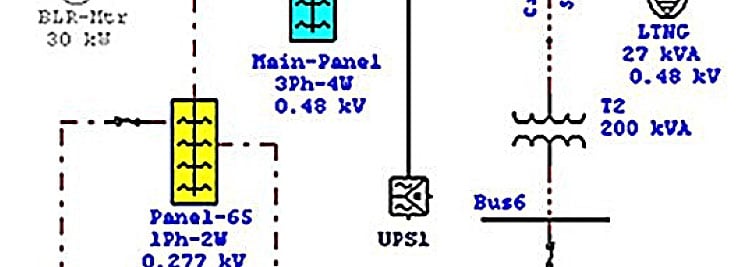
The motor acceleration system study is an important area in terms of electrical engineering. It measures proper starting and running of motors on load with given system inertia without causing tripping or instability in the system. These studies are essential in determining the impact on system voltage during starting and in establishing whether the motor will start satisfactorily and come up to speed. The result of these studies allows engineers to start motors individually, use load transitioning to test the impact of fast bus transfer voltage, and enable load-group actions. In various electrical installations in industrial and commercial units, engineers are continuously verifying and stimulating motor acceleration systems to regulate whether they are working properly. The essential areas they must measure the starting, stopping and restarting of electrical motors.
If the system voltage drops to less than 75 per cent, all motors would drop from the bus and other sensitive loads may also trip. The elensol motor acceleration system study empowers engineers to measure thoroughly the impact of load changes to electrical systems. We check for any abnormal operating conditions, after the motor starting calculations completed. Our study will analyse minimal and overstressed devices and generate a summary of alerts. Our engineers execute the motor acceleration system studies by using state of art ETAP power system analysis software, allowing them to carry out testing operations and motor starting simulation techniques. This software enables our engineers to not only test the motor acceleration and starting, but also simulate dynamic motor models and motor starting equipment; check system voltage flicker; and take note of sequence starting, percent load transitioning and warning alarms.
The elensol motor acceleration system study features help engineers carry out motor starting evaluations, containing unlimited event scenarios so that various testing procedures carried out on multiple, different types of motors. This analysis empowers the engineers to compare the different responses on these motors to each other. Our motor acceleration system study lets engineers simulate load change of running motors, load tap changers and voltage regulators. Our expertise in motor acceleration analysis allows us for the easiest means of simulating motor acceleration and evaluating the results make improvements in the future operations of the electric motor. Another important feature of our motor acceleration system study is the ability to enter detailed pre-start conditions for motor generation and loading. Our motor acceleration system study allows engineers to execute the necessary evaluations, report on them and correct abnormalities all within the same system.
The starting electricity of most air conditioning motors is several times normal than full load current when starting them directly at full rated voltage. The starting force varies directly as the square of the applied voltage. Excessive starting current results in drop in terminal voltage and may result in the following:
- Failure of motor starting due to low starting forces.
- Unnecessary operation of under voltage relays.
- Stalling of other running motors connected to the network.
- Voltage dips at the power sources and consequent flicker in the lighting system.
Motor starting studies will give choosing best method of starting, the proper motor design and the proper system design for minimizing the impact of the motor starting.
Analysis of motor starting methods performed by both static and dynamic simulation techniques as follows. These techniques have their own conveniences, advantages and drawbacks. We believe mainly in dynamic motor starting studies that reproduce observed motor starting conditions.
- Load flow type solution with the perceived starting impedance of the motor modelled as part of network modelling
- Short circuit method type of calculations considering pre-fault short circuit conditions and using voltage drop calculations considering motor starting currents. Alternatively
- Where accurate dynamic model of the motor electric circuit and load – torque characteristics are available, dynamic model of the motor can use in traditional transient stability algorithm to assess the impact of the motor starting.
- Absence of proper model information, dynamic stability reviews can use where the observed starting electricity used as nodal injection at the motor bus as a dynamic event and the system response to this dynamic event measured.
The various strategies described above can take into account, all types of motor starting such as
- Direct on line
- With compensation
- Auto-transformers
- Soft Starters
- Start-Delta Start
- Performance curves supplied from manufacturer
- Variable frequency drives
